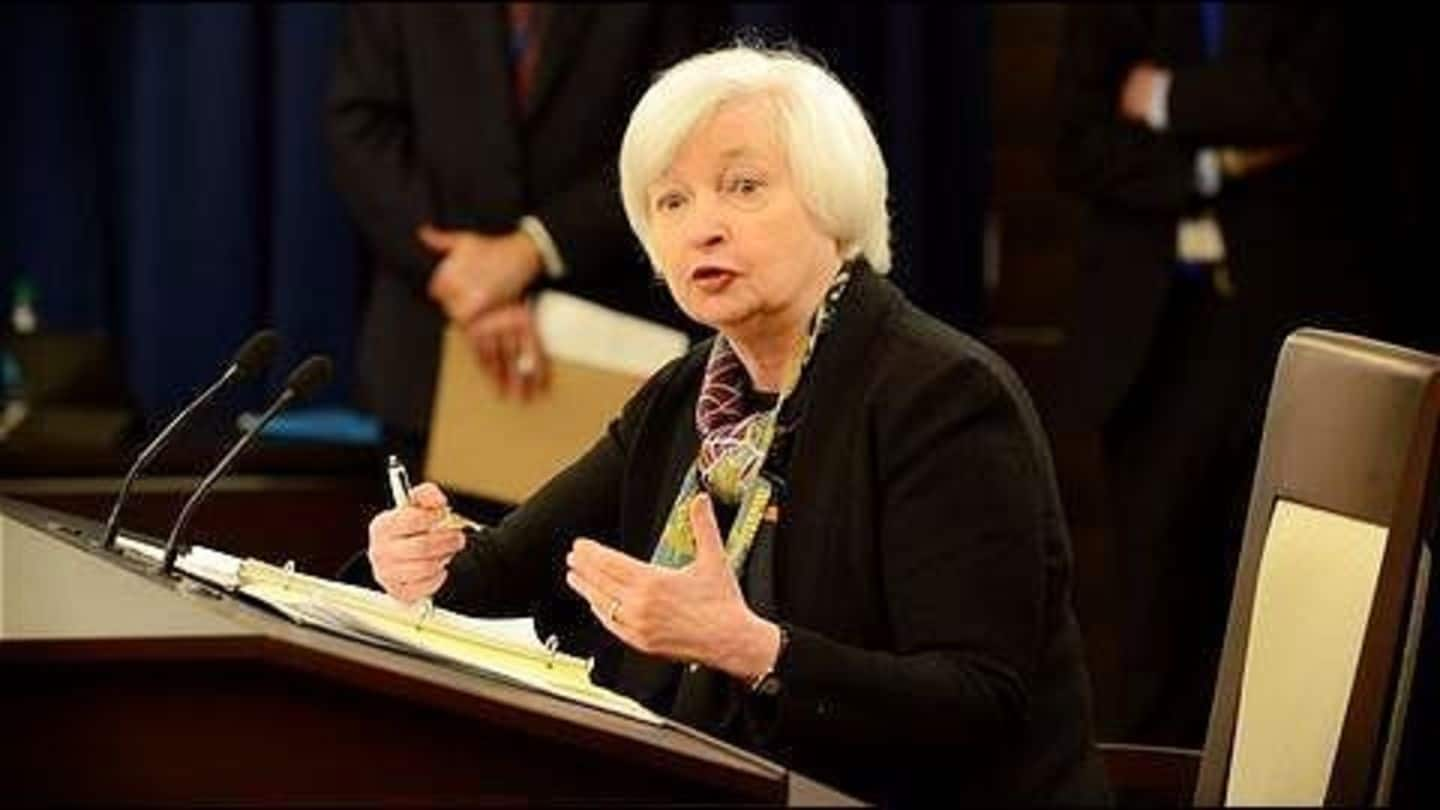
US Federal Reserve hikes benchmark interest by 0.25%
What's the story
The US Federal Reserve raised its benchmark interest rate for the second time in three months by 0.25% to a range of 0.75-1%. The move is prompted by steady economic growth, strong job gains and confidence that inflation is rising to the Fed's target. The decision marked one of the central bank's most convincing steps "to return monetary policy to a more normal footing."
Introduction
About the Federal Reserve System
The Federal Reserve System, the US's central banking system, was established in 1913 with the enactment of 'Federal Reserve Act' following a series of financial panics. In the Act, the US Congress established three main objectives for the monetary policy: maximizing employment, stabilizing prices, and moderating long-term interest rates. Several events, over the years, led to the expansion of the Fed's roles and responsibilities.
Information
Federal Open Market Committee
The decision to hike rates was approved with a 9-1 vote by the Fed's policy-setting Federal Open Market Committee (FOMC). The dissenting vote was cast by Minneapolis Fed President Neel Kashkari, who preferred to leave the rates unchanged.
Federal Reserve
Further rate hikes would be gradual: Federal Reserve
The Fed's policy-setting committee didn't flag any plan to accelerate the pace of monetary tightening. Inflation is close to the central bank's 2% target; it noted the goal was "symmetric", indicating a willingness to allow prices to increase at a slightly faster pace. The Fed said further rate rises would be "gradual"; two more rate hikes this year and three in 2018 are expected.
Economy
Economic activity to expand at a moderate pace
Fresh economic forecasts indicated little change from the December policy meeting forecasts, showing the Fed has an idea how Donald Trump's administration policies may impact the economy in 2017 and beyond. The Fed said business investment "appears to have firmed somewhat"; it added, "With gradual adjustments in the stance of monetary policy, economic activity will expand at a moderate pace."
Projections
US economy to grow by 2.1% in 2017
The Fed's fresh projections showed the economy growing by 2.1% in 2017, unchanged from the December forecast. The interest rate's median estimate, where monetary policy would be judged as having a neutral effect on the economy, remained at 3.0%. The unemployment rate expected by the Fed remained unchanged at 4.5%. Core inflation was projected slightly higher at 1.9% compared to the previous 1.8% forecast.
Interest Hikes
Benchmark rate hiked third time in a decade
The benchmark rate has been hiked third time in a decade, after the Great Recession in 2008. The first hike was in Dec'15 (to 0.25-0.50%) and the second was in Dec'16 (0.50-0.75%). The current move comes amid a "broad improvement in the world economic outlook" and a sense among Fed policymakers that the US economy is close to their employment and inflation goals.
Quote
Federal Reserve Chairwoman Janet Yellen's statement
"The basis for today's decision is simply our assessment of the progress of the economy. Even after this increase, monetary policy remains accommodative, thus supporting some further strengthening in the job market, and a sustained return to 2% inflation."